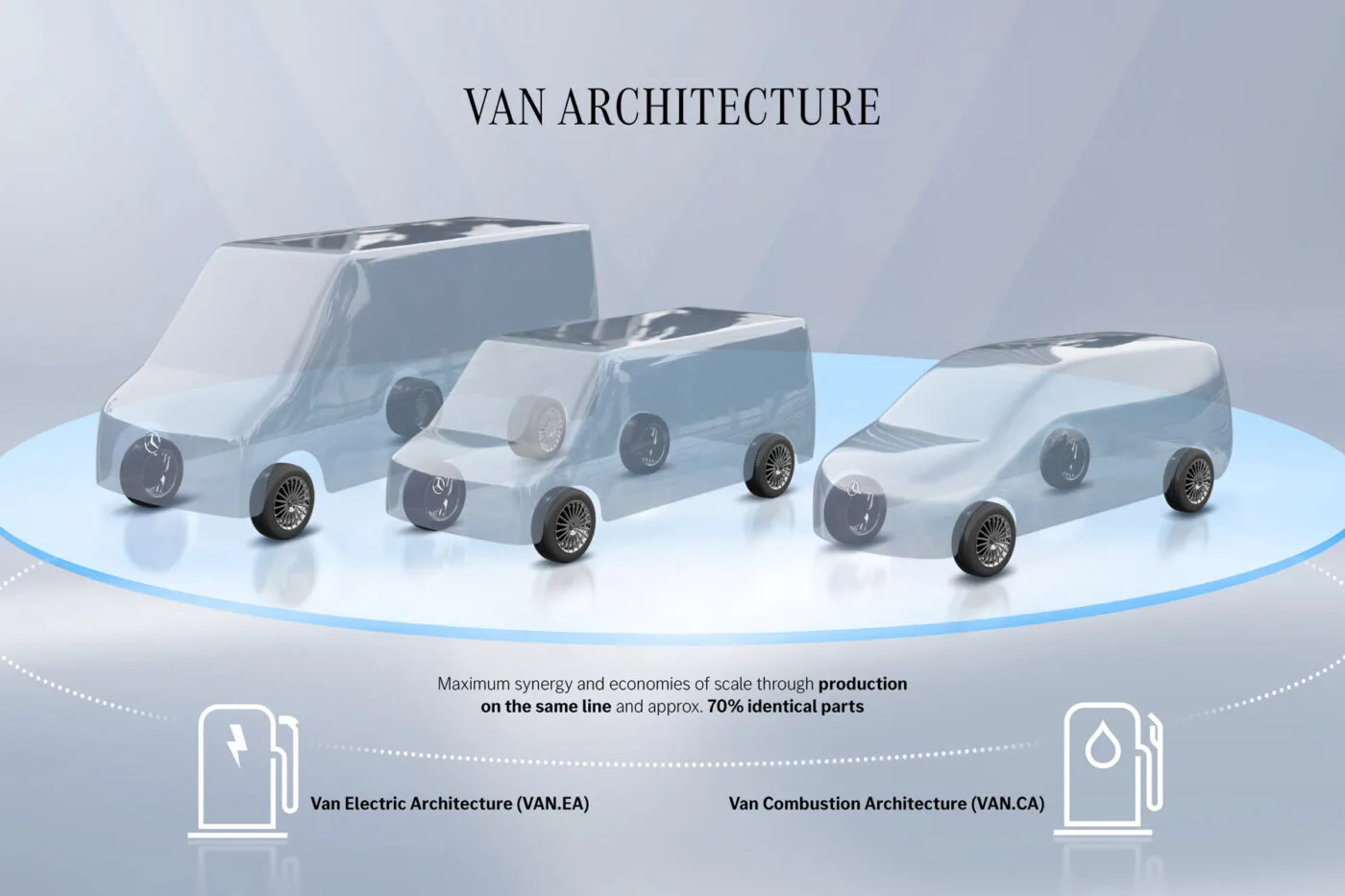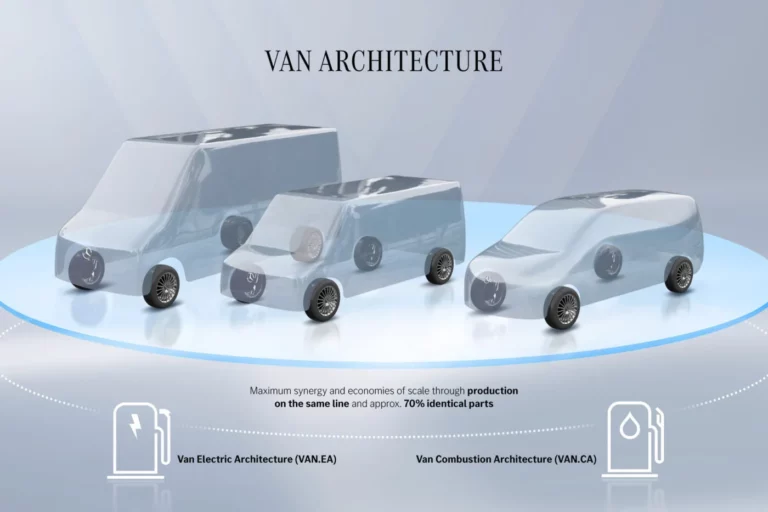Mercedes-Benz Vans Develops New Combustion Engine Platform
Mercedes-Benz Vans has announced the development of a new combustion engine platform called Van Combustion Architecture (VAN.CA) for its medium-sized and large vans. Initially, the company planned to base all new vans on the Van Electric Architecture (VAN.EA) platform from 2026. However, the new VAN.CA platform will cater to customer requirements for vans with state-of-the-art combustion engines.

The VAN.CA platform is designed to share around 70% identical parts with the VAN.EA platform and will be produced on the same production line, allowing for maximum synergies and economies of scale. This approach enables Mercedes-Benz Vans to maintain a competitive market position with a flexible product portfolio. The company aims to differentiate between luxury vans for private customers and commercial vans through these new architectures.
While Mercedes hasn’t provided extensive details about the VAN.CA, insights from the VAN.EA suggest a modular design with front, middle, and rear modules. The VAN.EA’s modular design includes a front module for the electric drive, a center module that scales vehicle length and houses the battery, and a rear module available with or without an additional electric motor for all-wheel drive models. Adapting these modules for combustion engines will likely involve integrating components like combustion engines, exhaust systems, and cardan shafts.
The introduction of VAN.CA may impact Mercedes-Benz Vans’ electric target of achieving 50% all-electric van sales by 2030. In 2024, the company’s electric van sales declined to 4.8% of total sales. The company’s strategic decision to develop both electric and combustion engine platforms reflects its commitment to meeting diverse customer needs.



